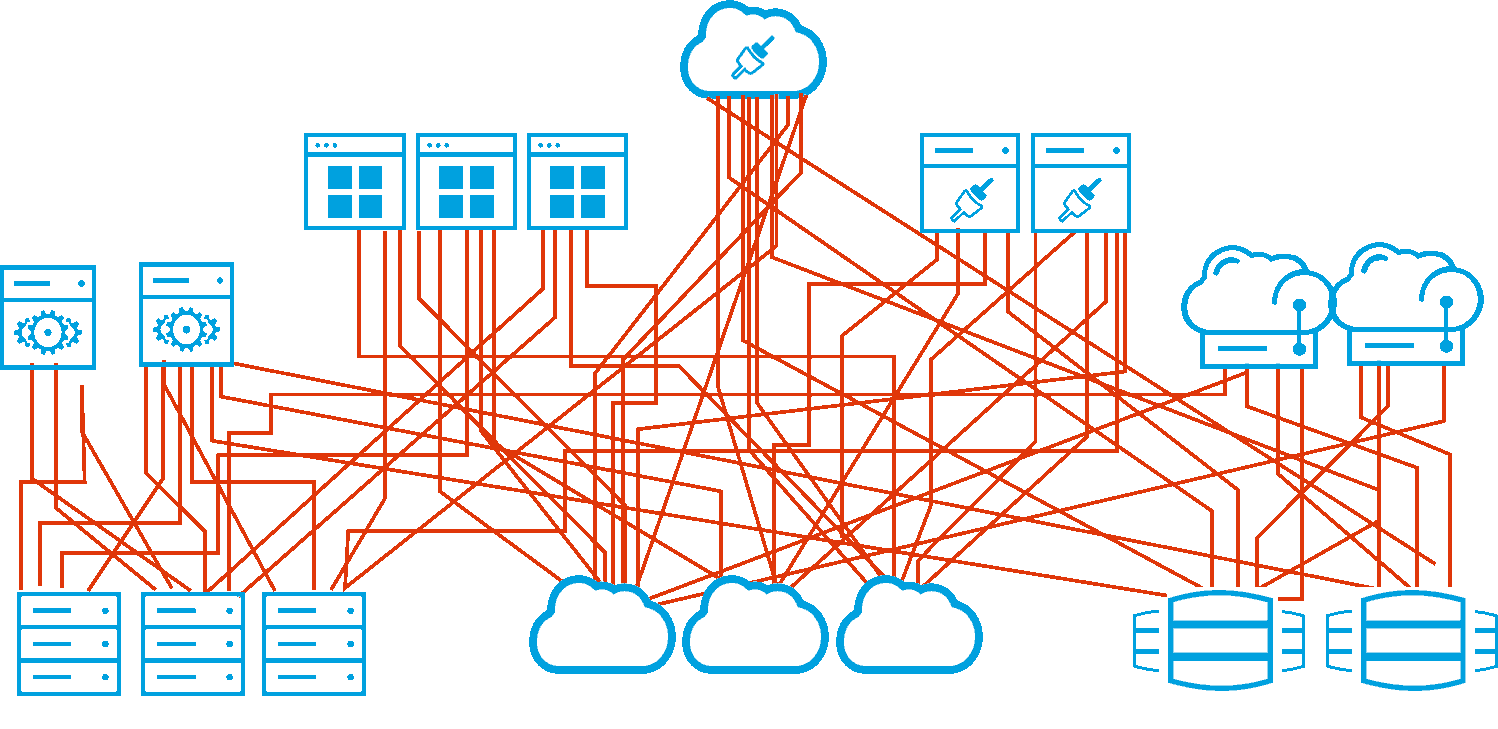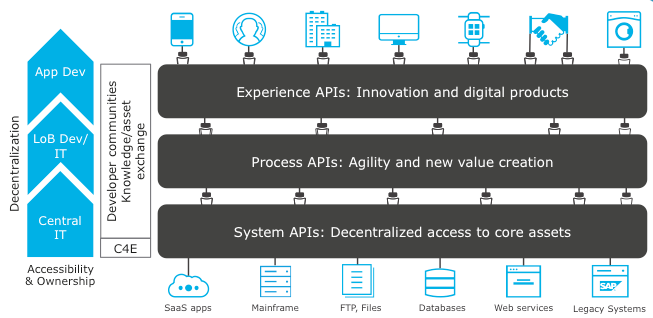Here is a well-known fact: Technology has become a part of every aspect of our lives. We are all connected in some way. We live in a highly connected world. Every day we create a humongous amount of data, as individuals, businesses, or machines. And we do so with the help of numerous devices and applications. As consumers, we keep interacting with new technologies that change the way we live. We want the systems to be powerful and want them to work together seamlessly. We expect the organizations to deliver these functionalities faster than ever. To meet this, organizations are presented with several specialized tools to meet customer expectations.
Point-to-Point Integration

Currently, number of companies meet these needs by developing point-to-point integrations between the various systems. In doing so over the years and years, the organizations have a giant tangled mess at the core of the business. Point-to-Point communication involves a lot of custom code and results in the creation of tightly coupled systems. Due to this, even the minor changes in the integrations will require complete rewrites of code. Over the year, the system becomes complex and harden to maintain and scale. Due to businesses loses the agility. The world is changing gradually and so do consumer expectations. To meet these organizations, we need to break the tangled mess of the systems. This is where API Led Connectivity comes in.
API-Led Connectivity is a methodical way of connecting applications, data, and devices through reusable and purposeful APIs.
API-Led connectivity

Using API Led Connectivity Developers and system architects can deliver applications which avoid tightly coupled point-to-point integrations providing:
- Clear contracts between systems
- Reusability
- Discoverability
- Visibility and security
- Availability and resiliency
The technologies used by the organizations to engage with consumers are evolving gradually day by day and the role of API-led connectivity seems to be a crucial integration strategy. Technologies like IoT, SaaS, Cloud technologies, and APIs are providing more powerful tools to bring the best out of business like generating more revenue, understanding the customer better, etc. Traditionally, these integrations were done using point-to-point(P2P) integration, but those had many limitations.
API Led Connectivity categorizes the APIs into 3 categories:
- System APIs: Underlying all IT architectures are core systems of record (for example one ERP, key customer and billing systems, proprietary databases, etc). These APIs usually access the core systems of record and provide a means of insulating the user from the complexity of any changes to the underlying systems. System APIs handle the trivial details of connecting to systems (think databases) such that users are insulated from any changes.
- Process APIs: Process APIs shape data across System APIs, with the intent of modeling business needs and processes, to break down technology silos and make data more consumable. The underlying business processes that shape this data should be strictly encapsulated independently of the source systems from which that data originates, as well as the target channels which deliver the data.
- Experience APIs: Data can be reconfigured easily in this layer according to specific needs. Data is now consumed across a broad set of channels, each of which wants access to the same data but in a different shape. Experience APIs reshape this data so that it is most easily consumed by its audience through apps and devices. These APIs are created with reusability in mind, independent of the source systems from which that data originates.
Advantages of API Led Connectivity:
Here are a few advantages of API Led Connectivity:
- Scalable: API led connectivity empowers API reuse enabling quicker application development and easy integration between systems.
- Distributed and tailored approach: API led connectivity approach recognizes that there can’t be one size that fits all architectures. This allows connectivity to be addressed in a distributed manner that can be exposed through the API or Microservice.
- Deeper operational visibility: Comprehensive connectivity in this way allows for greater operational insight, that provides end-to-end insight from receipt of initial API request call to the completion of that request based on an underlying database query.
- Bi-modal IT with agility: The API-led connectivity ensures stability and control on the core system of records, and at the same time, allows rapid innovation and iteration of application that access those systems.
- IT as a platform for the business: When an organization exposes its data assets as services to a broader audience, their IT can start to become a platform that allows various lines of business to self-serve.
According to MuleSoft, one of the largest iPaaS providers, their customers found that the increases in agility and speed provided by API-led connectivity led to faster delivery of projects as compared to legacy or homegrown integration solutions. It also led to an increase in team productivity by 300%.